ED Air-Spaced Triplet APO Refracting Telescopes
Apochromatic (APO) lenses are designed to bring three wavelengths of light (red, green, and blue) into focus in the same plane. In contrast, achromatic lenses are corrected to bring two wavelengths into focus in the same plane.

The classic achromatic doublet made from optical crown and flint glasses bring two colors of light to a common focus. This diagram shows the image forming lens in the front and the correcting lens in the back.
Apochromat optics were first developed by Peter Dolland in 1763. His air-spaced triplet design ushered forth many optical improvements but lacked the use of ED glass that we see in most apochromatic optical designs today. ED glass enhances apochromatic lens design by producing extra-low dispersion of the wavelengths of light passing through it thereby giving an even better apochromatic performance. For more specifications and information on the different types of glass used in Explore Scientific apochromatic triplets, please click here.

Explore Scientific true apochromatic telescopes utilize three air-spaced elements with the ED element in the middle to bring the light of three different frequencies to a common focus, thus mitigating the effects of chromatic aberration.
- In stock Remove filter
- Clear all
-
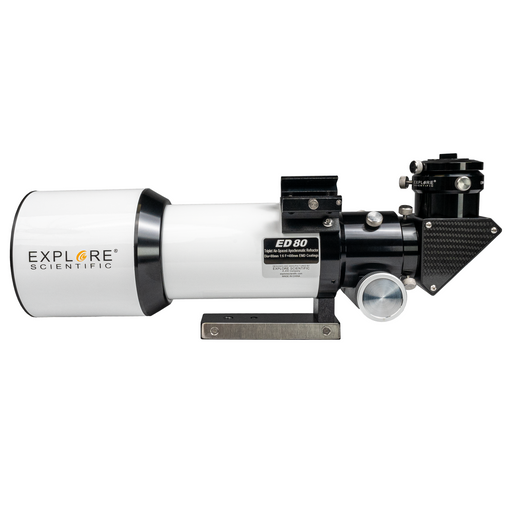 Save $ 0.00
Save $ 0.00
Original price $ 799.99 - Original price $ 799.99Original price$ 799.99$ 799.99 - $ 799.99Current price $ 799.99| /
Save $ 0.00
Save $ 0.00
Original price $ 799.99 - Original price $ 799.99Original price$ 799.99$ 799.99 - $ 799.99Current price $ 799.99| /Explore Scientific ED80 Essential Series Air-Spaced Triplet Refractor Telescope - ES-ED0806-02
Explore ScientificDescription The ED80 Essential Series Air-Spaced Triplet Refractor is a true apochromatic telescope that reveals celestial wonders like the desola...
View full detailsOriginal price $ 799.99 - Original price $ 799.99Original price$ 799.99$ 799.99 - $ 799.99Current price $ 799.99| /Save $ 0.00 Save $ 0.00 -
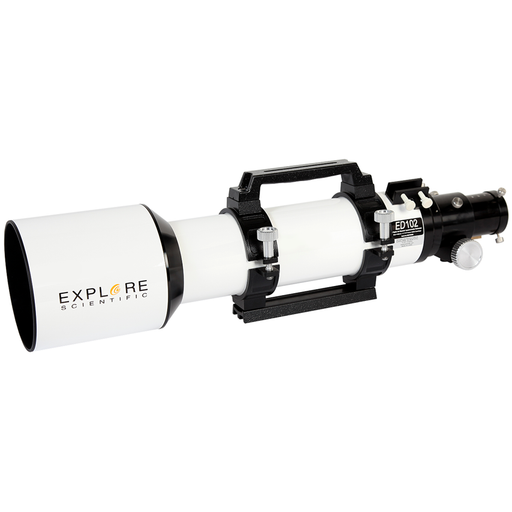 Save $ 0.00
Save $ 0.00
Original price $ 1,099.99 - Original price $ 1,099.99Original price$ 1,099.99$ 1,099.99 - $ 1,099.99Current price $ 1,099.99| /
Save $ 0.00
Save $ 0.00
Original price $ 1,099.99 - Original price $ 1,099.99Original price$ 1,099.99$ 1,099.99 - $ 1,099.99Current price $ 1,099.99| /Explore Scientific ED102 Essential Series Air-Spaced Triplet APO Refractor Telescope - ES-ED10207-02
Explore ScientificDescription The Explore Scientific ED102 Essential Series Air-Spaced Triplet APO Refractor Telescope is a true apochromat refractor that reveals o...
View full detailsOriginal price $ 1,099.99 - Original price $ 1,099.99Original price$ 1,099.99$ 1,099.99 - $ 1,099.99Current price $ 1,099.99| /Save $ 0.00 Save $ 0.00 -
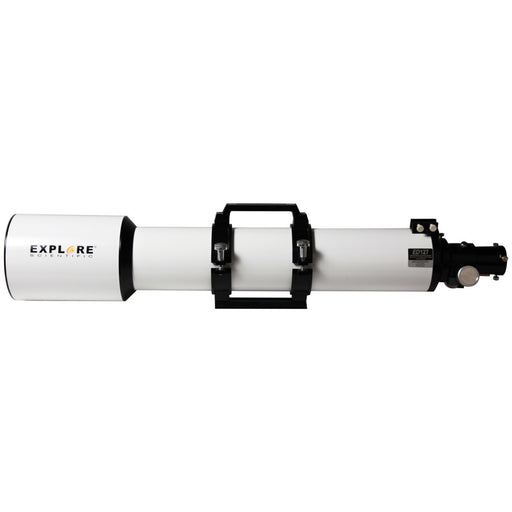 Save $ 0.00
Save $ 0.00
Original price $ 1,799.99 - Original price $ 1,799.99Original price$ 1,799.99$ 1,799.99 - $ 1,799.99Current price $ 1,799.99| /
Save $ 0.00
Save $ 0.00
Original price $ 1,799.99 - Original price $ 1,799.99Original price$ 1,799.99$ 1,799.99 - $ 1,799.99Current price $ 1,799.99| /Explore Scientific ED127 Essential Series Air-Spaced Triplet Refractor Telescope - ES-ED127075-04
Explore ScientificDescription The Original Classic Explore Scientific ED127 Air-Spaced Triplet, Retooled for the Astrophotographer: New precision front cell wit...
View full detailsOriginal price $ 1,799.99 - Original price $ 1,799.99Original price$ 1,799.99$ 1,799.99 - $ 1,799.99Current price $ 1,799.99| /Save $ 0.00 Save $ 0.00 -
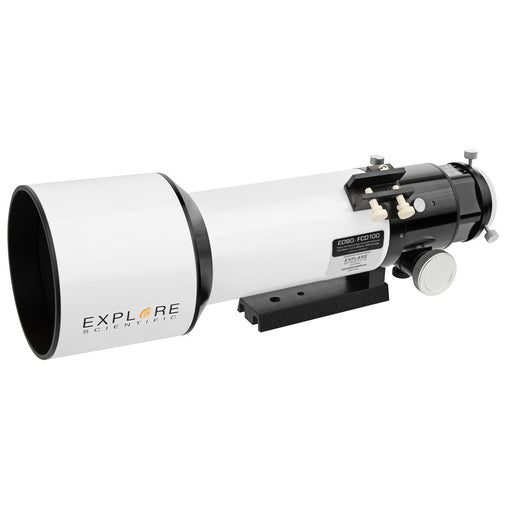 Save $ 0.00
Save $ 0.00
Original price $ 1,299.99 - Original price $ 1,299.99Original price$ 1,299.99$ 1,299.99 - $ 1,299.99Current price $ 1,299.99| /
Save $ 0.00
Save $ 0.00
Original price $ 1,299.99 - Original price $ 1,299.99Original price$ 1,299.99$ 1,299.99 - $ 1,299.99Current price $ 1,299.99| /Explore Scientific ED80-FCD100 Series Air-Spaced Triplet Refractor Telescope - FCD100-0806-02
Explore ScientificDescription Reveal celestial wonders like the desolate beauty of the lunar terrain, the serene structure of Saturn’s rings or the brightest deep s...
View full detailsOriginal price $ 1,299.99 - Original price $ 1,299.99Original price$ 1,299.99$ 1,299.99 - $ 1,299.99Current price $ 1,299.99| /Save $ 0.00 Save $ 0.00 -
 Save $ 0.00
Save $ 0.00
Original price $ 1,799.99 - Original price $ 1,799.99Original price$ 1,799.99$ 1,799.99 - $ 1,799.99Current price $ 1,799.99| /
Save $ 0.00
Save $ 0.00
Original price $ 1,799.99 - Original price $ 1,799.99Original price$ 1,799.99$ 1,799.99 - $ 1,799.99Current price $ 1,799.99| /Explore Scientific ED102-FCD100 Series Air-Spaced Triplet Refractor Telescope - FCD100-10207-02
Explore ScientificDescription Reveal celestial wonders like the desolate beauty of the lunar terrain, the serene structure of Saturn’s rings or the brightest deep s...
View full detailsOriginal price $ 1,799.99 - Original price $ 1,799.99Original price$ 1,799.99$ 1,799.99 - $ 1,799.99Current price $ 1,799.99| /Save $ 0.00 Save $ 0.00 -
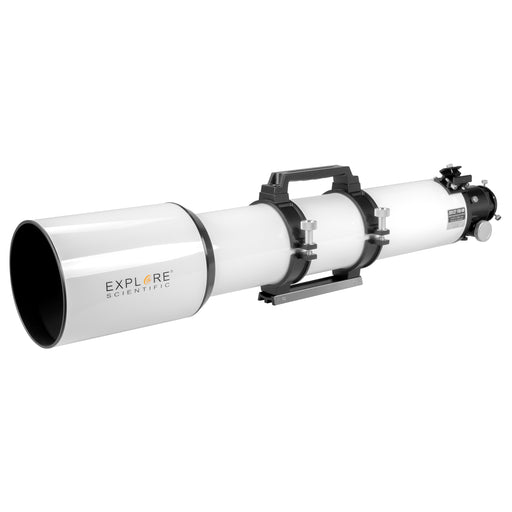 Save $ 0.00
Save $ 0.00
Original price $ 2,499.99 - Original price $ 2,499.99Original price$ 2,499.99$ 2,499.99 - $ 2,499.99Current price $ 2,499.99| /
Save $ 0.00
Save $ 0.00
Original price $ 2,499.99 - Original price $ 2,499.99Original price$ 2,499.99$ 2,499.99 - $ 2,499.99Current price $ 2,499.99| /Explore Scientific FCD100 Series 127mm f/7.5 Aluminum Air-Spaced Triplet ED APO Refractor Telescope
Explore ScientificDescription Reveal celestial wonders like the desolate beauty of the lunar terrain, the serene structure of Saturn’s rings or the brightest deep s...
View full detailsOriginal price $ 2,499.99 - Original price $ 2,499.99Original price$ 2,499.99$ 2,499.99 - $ 2,499.99Current price $ 2,499.99| /Save $ 0.00 Save $ 0.00 -
 Save $ 0.00
Save $ 0.00
Original price $ 2,999.99 - Original price $ 2,999.99Original price$ 2,999.99$ 2,999.99 - $ 2,999.99Current price $ 2,999.99| /
Save $ 0.00
Save $ 0.00
Original price $ 2,999.99 - Original price $ 2,999.99Original price$ 2,999.99$ 2,999.99 - $ 2,999.99Current price $ 2,999.99| /Explore Scientific FCD100 Series 127mm f/7.5 Carbon Fiber Triplet ED APO Refractor Telescope with 2.5" HEX Focuser
Explore ScientificDescription Reveal celestial wonders like the desolate beauty of the lunar terrain, the serene structure of Saturn’s rings or the brightest deep s...
View full detailsOriginal price $ 2,999.99 - Original price $ 2,999.99Original price$ 2,999.99$ 2,999.99 - $ 2,999.99Current price $ 2,999.99| /Save $ 0.00 Save $ 0.00 -
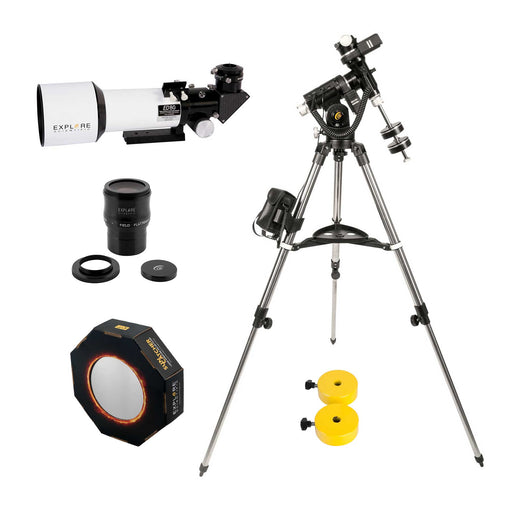 Save $ 0.00
Save $ 0.00
Original price $ 1,809.96 - Original price $ 1,809.96Original price$ 1,809.96$ 1,809.96 - $ 1,809.96Current price $ 1,809.96| /
Save $ 0.00
Save $ 0.00
Original price $ 1,809.96 - Original price $ 1,809.96Original price$ 1,809.96$ 1,809.96 - $ 1,809.96Current price $ 1,809.96| /Explore Scientific ED80 Essential Series Air-Spaced Triplet Refractor Telescope with iEXOS-100-2 PMC-Eight Equatorial Tracker System with WiFi and Bluetooth, 2 Extra Counterweights, Field Flattener and Solar Filter
Explore ScientificSolar Photography Starter Package This package is also great for starting your nighttime photography -- called astrophotography. Simply remove the...
View full detailsOriginal price $ 1,809.96 - Original price $ 1,809.96Original price$ 1,809.96$ 1,809.96 - $ 1,809.96Current price $ 1,809.96| /Save $ 0.00 Save $ 0.00 -
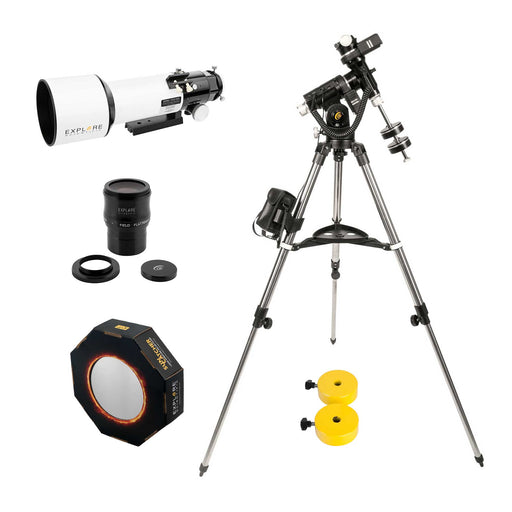 Save $ 0.00
Save $ 0.00
Original price $ 2,409.96 - Original price $ 2,409.96Original price$ 2,409.96$ 2,409.96 - $ 2,409.96Current price $ 2,409.96| /
Save $ 0.00
Save $ 0.00
Original price $ 2,409.96 - Original price $ 2,409.96Original price$ 2,409.96$ 2,409.96 - $ 2,409.96Current price $ 2,409.96| /Explore Scientific ED80-FCD100 Series Air-Spaced Triplet Refractor Telescope with iEXOS-100-2 PMC-Eight Equatorial Tracker System with WiFi and Bluetooth, 2 Extra Counterweights, Field Flattener and Solar Filter
Explore ScientificSolar Photography Starter Package This package is also great for starting your nighttime photography -- called astrophotography. Why buy a triplet...
View full detailsOriginal price $ 2,409.96 - Original price $ 2,409.96Original price$ 2,409.96$ 2,409.96 - $ 2,409.96Current price $ 2,409.96| /Save $ 0.00 Save $ 0.00 -
 Save $ 0.00
Save $ 0.00
Original price $ 4,499.99 - Original price $ 4,499.99Original price$ 4,499.99$ 4,499.99 - $ 4,499.99Current price $ 4,499.99| /
Save $ 0.00
Save $ 0.00
Original price $ 4,499.99 - Original price $ 4,499.99Original price$ 4,499.99$ 4,499.99 - $ 4,499.99Current price $ 4,499.99| /Explore Scientific ED152 Air-Spaced Triplet Telescope in Carbon Fiber - TED15208CF-HEX33
Explore ScientificDescription Observing with the ED152 Air-Spaced Triplet FCD1 Series Apochromatic Refractor in Carbon Fiber with genuine HOYA FCD1 ED Glass: Seriou...
View full detailsOriginal price $ 4,499.99 - Original price $ 4,499.99Original price$ 4,499.99$ 4,499.99 - $ 4,499.99Current price $ 4,499.99| /Save $ 0.00 Save $ 0.00 -
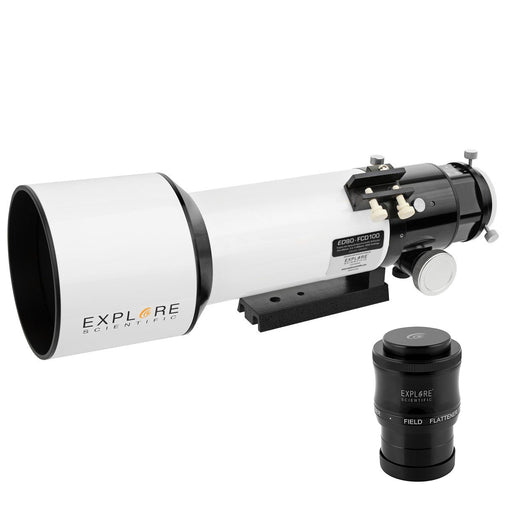 Save $ 0.00
Save $ 0.00
Original price $ 1,199.99 - Original price $ 1,199.99Original price$ 1,199.99$ 1,199.99 - $ 1,199.99Current price $ 1,199.99| /
Save $ 0.00
Save $ 0.00
Original price $ 1,199.99 - Original price $ 1,199.99Original price$ 1,199.99$ 1,199.99 - $ 1,199.99Current price $ 1,199.99| /Explore Scientific ED80-FCD100 Series Air-Spaced Triplet Refractor Telescope and Field Flattener f/5 to f/7 - FCD100-0806-02-FF
Explore ScientificFeatures This is a field flattener for refractor-type telescopes with a focal ratio of f/5 to f/7 Causes no change to the telescope focal length ...
View full detailsOriginal price $ 1,199.99 - Original price $ 1,199.99Original price$ 1,199.99$ 1,199.99 - $ 1,199.99Current price $ 1,199.99| /Save $ 0.00 Save $ 0.00 -
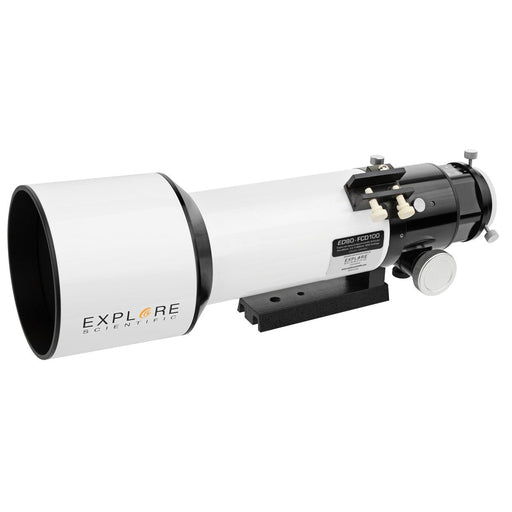 Save $ 0.00
Save $ 0.00
Original price $ 1,199.99 - Original price $ 1,199.99Original price$ 1,199.99$ 1,199.99 - $ 1,199.99Current price $ 1,199.99| /
Save $ 0.00
Save $ 0.00
Original price $ 1,199.99 - Original price $ 1,199.99Original price$ 1,199.99$ 1,199.99 - $ 1,199.99Current price $ 1,199.99| /Explore Scientific ED80-FCD100 Series Air-Spaced Triplet Refractor Telescope and Hybrid 2N1 finder base - FCD100-0806-01
Explore ScientificThis ED80-FCD100 comes with the Hybrid 2N1 finder base included (but not installed) Description Reveal celestial wonders like the desolate beauty ...
View full detailsOriginal price $ 1,199.99 - Original price $ 1,199.99Original price$ 1,199.99$ 1,199.99 - $ 1,199.99Current price $ 1,199.99| /Save $ 0.00 Save $ 0.00 -
 Save $ 179.00
Save $ 0.00
Original price $ 899.99Original price $ 899.99 - Original price $ 899.99Original price $ 899.99Current price $ 720.99$ 720.99 - $ 720.99Current price $ 720.99| /
Save $ 179.00
Save $ 0.00
Original price $ 899.99Original price $ 899.99 - Original price $ 899.99Original price $ 899.99Current price $ 720.99$ 720.99 - $ 720.99Current price $ 720.99| /Certified Pre-Owned Explore Scientific ED80 Essential Series Air-Spaced Triplet Refractor Telescope
Explore ScientificCertified Pre-Owned Refurbished These Certified Pre-Owned items -- including telescopes and accessories -- have been thoroughly inspected by the E...
View full detailsOriginal price $ 899.99Original price $ 899.99 - Original price $ 899.99Original price $ 899.99Current price $ 720.99$ 720.99 - $ 720.99Current price $ 720.99| /Save $ 179.00 Save $ 0.00 -
 Save $ 400.03
Save $ 0.00
Original price $ 1,399.97Original price $ 1,399.97 - Original price $ 1,399.97Original price $ 1,399.97Current price $ 999.94$ 999.94 - $ 999.94Current price $ 999.94| /
Save $ 400.03
Save $ 0.00
Original price $ 1,399.97Original price $ 1,399.97 - Original price $ 1,399.97Original price $ 1,399.97Current price $ 999.94$ 999.94 - $ 999.94Current price $ 999.94| /Explore Scientific ED80 Essential Series Air-Spaced Triplet Refractor Telescope with 0.8x Focal Reducer and iEXOS-100-2 PMC-Eight Equatorial Tracker System with WiFi and Bluetooth®
Explore ScientificDescription The ED80 Essential Series Air-Spaced Triplet Refractor is a true apochromatic telescope that reveals celestial wonders like the desola...
View full detailsOriginal price $ 1,399.97Original price $ 1,399.97 - Original price $ 1,399.97Original price $ 1,399.97Current price $ 999.94$ 999.94 - $ 999.94Current price $ 999.94| /Save $ 400.03 Save $ 0.00














